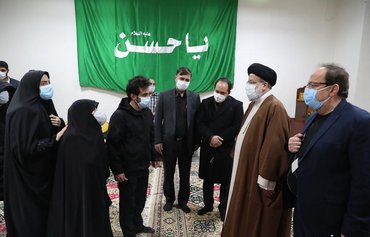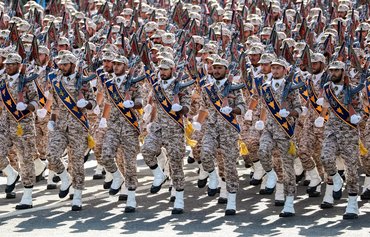Division inside Iran became more apparent Tuesday (February 16) when Iran's armed forces slammed the country's intelligence minister for alleging that one of its members was involved in the killing of Iran's top nuclear scientist Mohsen Fakhrizadeh.
The suspect was a trainee in 2014 and "dismissed mid-training due to moral issues and addiction", the armed forces general staff said in a statement carried by the IRNA state news agency.
The individual was never formally recruited and as a civilian "would fall under the jurisdiction of the intelligence ministry" for monitoring, it said, in a rare public row between a security service and the military in the Islamic Republic.
Top nuclear scientist Mohsen Fakhrizadeh was travelling on a highway outside Tehran accompanied by a security detail on November 27 when he came under machine-gun fire, according to Iranian authorities.
Intelligence Minister Mahmoud Alavi said in an interview with state television on February 8 that a member of the armed forces "carried out the first preparations" for the killing, and that it was not possible for his ministry "to keep watch over the armed forces".
In response, the armed forces said it expected Alavi "to be more careful in his remarks to the media" so as not to serve the interests of Iran's enemies and safeguard "the dignity of the armed forces" and his ministry.
Alavi responded by saying his ministry "was not allowed to gather information from the armed forces despite warnings about the assassination plot".
He did not elaborate on the reason.
On Sunday, the minister was quoted by ISNA news agency as saying the suspect was a "former member of the armed forces" and had left Iran before the assassination.
Growing divisions
Iran's armed forces have long been at odds with other branches of the Iranian regime, including the IRGC, who holds significant power over them and is allocated a large budget every year.
Some observers say the growing divisions within the government structures mirror the growing anger on the Iranian street.
Iran is facing a national currency in freefall, severe hyperinflation, economic stagnation and a dire shortage of resources.
Compounding the frustrations is the regime's willingness to sacrifice at home, while spending lavishly on proxy groups abroad.
The regime also spends untold millions on the research, testing and deployment of its domestic missile programme.
Public anger over economic and living conditions has reached a boiling point, and observers have cautioned that the next round of public protests might be far more violent than the November 2019 protests over the spike in fuel prices.
Security forces led by the IRGC responded to the protests by shooting demonstrators in several cities, and detaining and torturing hundreds afterwards. Some estimates suggest as many as 1,500 civilians were killed in the protests.
The 2019 protests were of a magnitude rarely seen in Iran following the 1979 Islamic Revolution, and the biggest since 2009 rallies over a disputed election.
Reports from Iran over the past few weeks and months of slowed down internet speeds and intermittent outages suggest the regime may be trying to tamp down on a new round of civil unrest.

![Members of the IRGC, the armed forces and top civilian leaders gather during a commemoration of the 42nd anniversary of the Islamic Republic at Imam Hossein University in Tehran on February 9. [Iranian Ministry of Defense]](/cnmi_di/images/2021/02/17/28499-iran-armed-forces-600_384.jpg)






